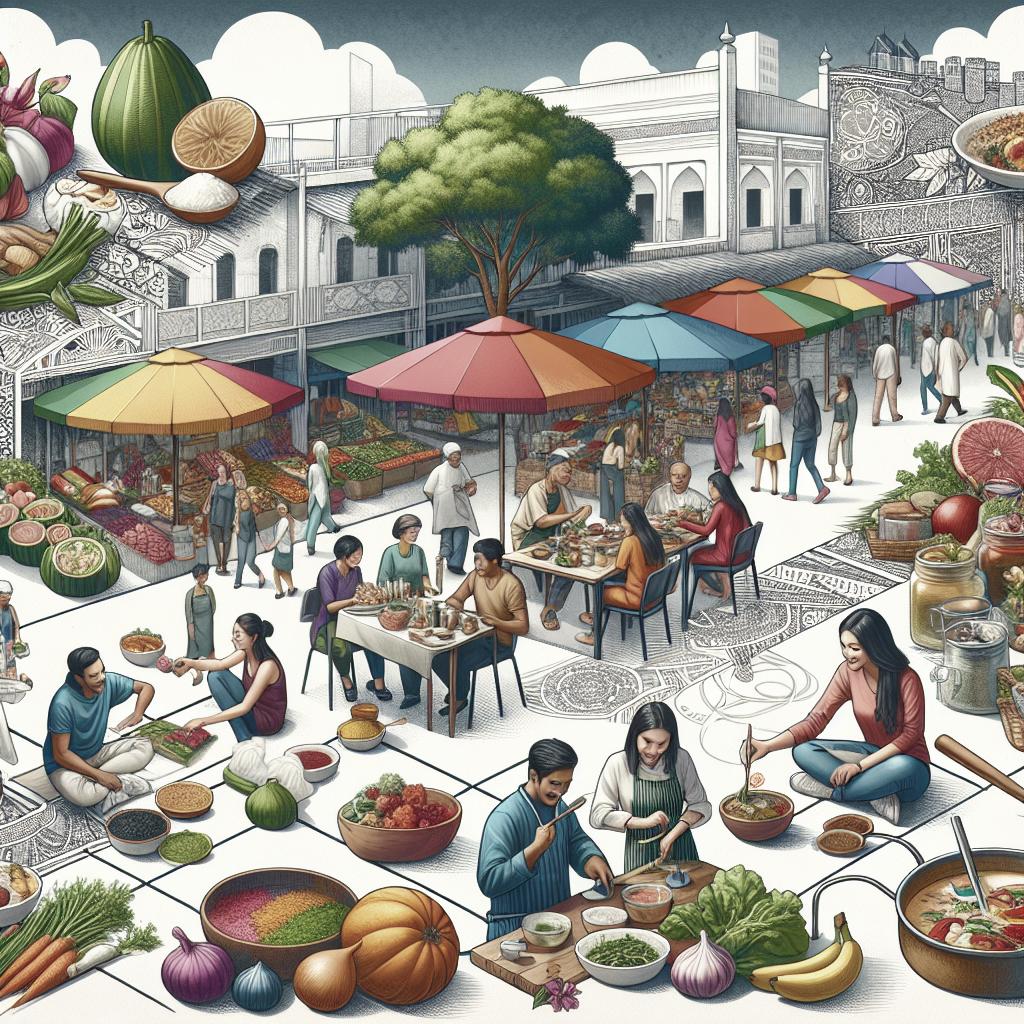“`html
How to Enjoy Local Cuisine
When traveling, one of the most enriching experiences is diving into the local cuisine, which offers a direct taste of a region’s culture, history, and traditions. In this blog post, we’ll delve into practical tips on how to best savor the flavors of the places you visit. From doing your own research, participating in cooking classes, and trusting seasoned guides, we’ll explore various approaches to ensure that you relish authentic meals wherever you go. While enjoying local dishes can be an adventure for the palate, it requires a discerning approach using reliable sources, conversations with locals, and vibrant market trips. Equipped with these strategies, your next culinary journey will be as rewarding as possible, creating gastronomic memories that are sure to last.
Tip: Don’t Trust Every Person’s Opinion, Even if They Live There
While it may seem logical to trust locals for authentic restaurant recommendations, remember that everyone’s taste is subjective. Just because someone lives in a place doesn’t mean they have tried all the best spots or even have a taste that aligns with your culinary preferences. Some locals might favor convenience or price over authenticity or quality.
Instead of relying on every local’s suggestion, gather diverse opinions and cross-reference them with your research. Seek out locals who have a passion for food, such as chefs, food bloggers, or food tour guides. They often have better insights into what’s genuinely worth trying, steering you toward hidden gems rather than tourist traps.
1. Do Your Research Before You Arrive
Preparation is crucial when it comes to enjoying local cuisine. Before your trip, dedicate time to researching the local specialties and popular dining spots. Use reputable travel guides, food blogs, and social media to gather information on must-try dishes and renowned local eateries.
Understanding the local food culture ahead of time helps set expectations and equips you with a list of dishes and places to explore once you arrive. This research can save you from the all-too-common tourist mistake of settling for the most convenient or overly commercialized food options.
2. Take a Cooking Class
Engaging in a local cooking class is a hands-on way to dive deep into the cuisine of a region. It’s not only an educational experience but also a fun opportunity to learn about traditional cooking techniques, ingredients, and culinary customs from seasoned professionals or passionate home cooks.
These classes often include a market tour, providing insight into ingredient selection and offering a chance to experience how locals shop. Cooking classes can wrap your travel memories with flavors you can recreate at home, perpetuating your culinary journey long after your trip ends.
3. Trust a Guide
Sometimes, the best way to explore a city’s food scene is by relying on expert guidance. Participating in a food tour led by knowledgeable guides can introduce you to local favorites you might not discover on your own. These guides are often culinary enthusiasts who are well-versed in the history and stories behind each dish.
Besides offering delectable samples, food tours provide cultural context that enriches the tasting experience. Guided tours can also save you time and ensure you experience a variety of dishes, maximizing your culinary exploration within a short period.
4. Eat Like a Local by Region
Local cuisine can vary significantly from one region to another, even within the same country. Embrace the diversity by understanding regional specialties. For instance, while Italy is famed for pasta and pizza, different regions boast their unique renditions and culinary traditions.
Immersing yourself in regional tastes means visiting smaller, local establishments over international chains. Seek out family-run restaurants and street food stalls where the locals eat to gain authentic experiences and flavors.
5. Pay (Wary) Attention to Reviews
Online reviews and ratings can be valuable for finding popular restaurants, but they should be approached with caution. High ratings don’t always guarantee authenticity or quality, as they can sometimes reflect tourist preferences rather than local tastes.
Read reviews critically, focusing on those that mention the authenticity of the food and whether the establishment is frequented by locals. Use reviews as a part of your research rather than the sole determinant of where to eat.
6. Talk to Service Industry Pros
One of the easiest ways to find food recommendations is to speak with taxi drivers, hotel staff, or service industry professionals. They often have firsthand knowledge of standout local dining options that are off the beaten path.
These individuals can provide honest feedback and suggest places that might not be featured in international travel guides. Don’t hesitate to ask where they like to eat and why; their insights can lead you to delicious discoveries.
7. Head to the Market
Local markets are treasure troves of regional flavors and an essential stop for any culinary explorer. Markets showcase fresh, local produce and offer a variety of stalls where you can taste prepared dishes, snacks, and street food.
In addition to enjoying a unique meal, visiting markets provides a glimpse into daily life and food culture. You can interact with vendors, learn about typical ingredients used in local dishes, and get direct recommendations for nearby eateries.
8. Know Your Limitations
As adventurous as sampling new cuisine can be, it’s important to acknowledge your dietary limitations or restrictions. Make sure you’re aware of any ingredients you might be allergic to or any dietary preferences you follow.
While trying new foods is part of the experience, priority should always be placed on your health and well-being. Enjoying local cuisine is best when it doesn’t compromise your comfort or safety.
Next Steps
Implementing these strategies ensures that your exploration of local cuisines will be both fruitful and satisfying. Take these tips a step further by personalizing your approach according to your own preferences and limitations, crafting a unique culinary adventure.
| Strategy | Description |
|---|---|
| Don’t Trust Every Person’s Opinion | Not all locals provide the best food recommendations; seek diverse opinions. |
| Do Your Research Before Arrival | Research local dishes and dining spots pre-trip for a rewarding experience. |
| Take a Cooking Class | Learn about local food and cooking methods for a deeper understanding. |
| Trust a Guide | Use food tours for expert advice and cultural context while tasting. |
| Eat Like a Local by Region | Explore regional specialties for a diverse culinary experience. |
| Pay (Wary) Attention to Reviews | Evaluate reviews critically, focusing on authenticity and local frequents. |
| Talk to Service Industry Pros | Ask local service staff for dining recommendations not found in guides. |
| Head to the Market | Visit markets for fresh produce, local dishes, and authentic experiences. |
| Know Your Limitations | Be aware of dietary restrictions to ensure a safe culinary adventure. |
Thanks for Signing Up
Your culinary journey doesn’t end here. Keep exploring and tasting your way around the world, and stay tuned for more tips and stories from our travel series.
More Travel, Right This Way
Continue to expand your horizons with our guides and travel tips. Your next gourmet adventure awaits just around the corner.
“`

